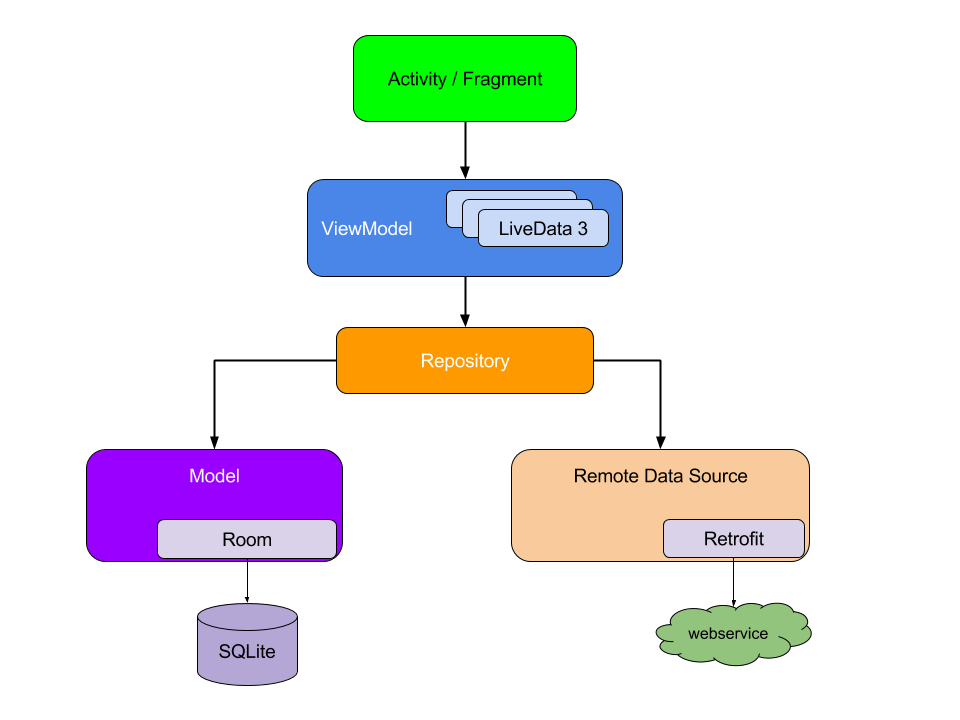- Android Studio Version - Android Studio Bumblebee | 2021.1.1 Patch 2
- Gradle Version - build:gradle:7.1.3
- Build Tools - 30.0.3
- I have been able to run this using an Emulator or a physical device. The version of Android Studio that I used to build the application is BumbleBee
- I focused on using the MVVM design pattern and packaging by feature to make it easy to navigate the feature in this application.
- I think its very important to establish a solid foundation when it comes to choosing a design pattern. This will go a long way in terms of maintainability and extensibility of this application as the business logic changes or features are added.
- 4 hours
- I didn't focus on writing any UI tests since the instructions made it clear that Unit Tests were more important. Give more time I would like to add a custom UI, possibly a floating action button, to filter the results. I think a filter by employee type makes a lot of sense. Possibly a grouping by Employee type would also be useful.
- The weakest part of the project is the lack of a database to cache data that comes down from the API requests.
- I have implemented similar coding patterns in a previous project - https://github.com/lawloretienne/CryptoCoins
- This was developed with a mobile device in mind. I have not tested this on a Tablet.
- I am using Coil for ImageLoading. They have implemented their own mechanisms for image caching to disk- https://github.com/coil-kt/coil/tree/9feecb8382a34442fe193c84626d778d5f4fb572/coil-base/src/main/java/coil/disk
- MVVM
- The ViewModels I am using extend from the lifecycle-aware ViewModel component. The Views I am using are Activities. And the Model is the Repository.
- Network and Domain Models with Mappers
- I have separated out the Employee object into different models depending on where the object is used. I also have created Mapper interfaces to allowing mapping between the different models. This helps to provides a clear understanding of the responsibility. This is in accordance with Uncle Bob's Clean Architecture. The important thing is that isolated, simple, data structures are passed across the boundaries. We don’t want the data structures to have any kind of dependency that violates The Dependency Rule.
- Repository Pattern
- This pattern provides a clean API so that the ViewModel can retrieve the data easily without having knowledge of how the datasource fetches the data. In my repository I only have a remote data source which makes the remote API call. There is no local data source to save to a database.
- Kotlin
- I used Kotlin throughout the project because it is concise in the amount of boilerplate code that is reduced. It is safe in that it avoids entire classes of errors such as null pointer exceptions. And it is interoperable in that it leverage existing libraries for the JVM, Android, and the browser.
- Core
- This is where code lives that spans across the different layers of the application
- Data
- This is my data layer and consists of the Network related classes including the EmployeesService interface, and the Repository class as well as the remote data source
- UI
- This is the presentation layer. I have set up packages by feature here. This consists of most of the view related code. I have also added a domain model as well as a domain mapper.
- ConstraintLayout
- Position and size widgets in a flexible way with relative positioning.
- Multidex
- Deploy applications with multiple dex files on pre-Android 5 devices.
- Hilt
- I am using Hilt to simplify the Dagger-related infrastructure
- Unit tests
- I have created unit tests for ViewModels, Repositories, and RemoteDataSources. I prefer to use the Given - When - Then format for my tests.
- Espresso tests
- In the future, it would help to write Android UI tests with Espresso.
This project was created with Android Studio Bumblebee

